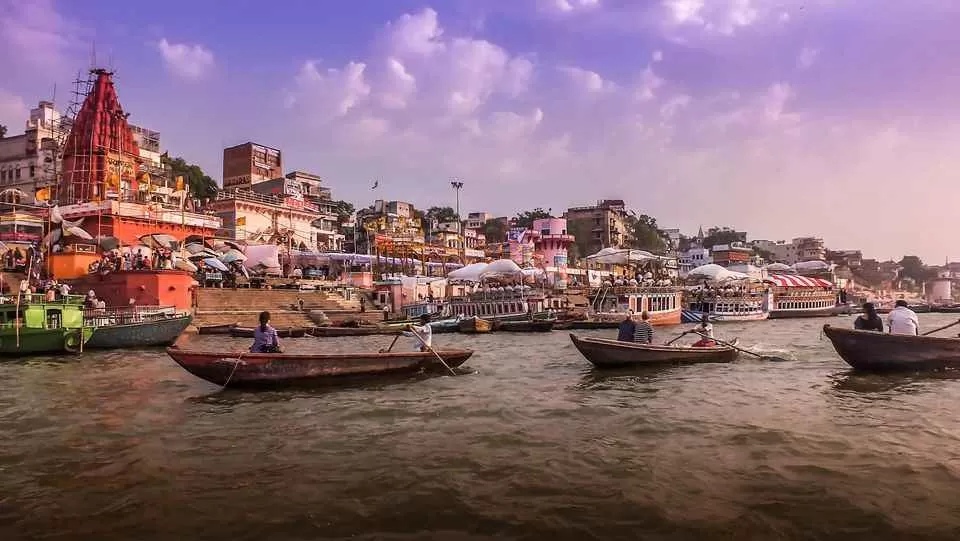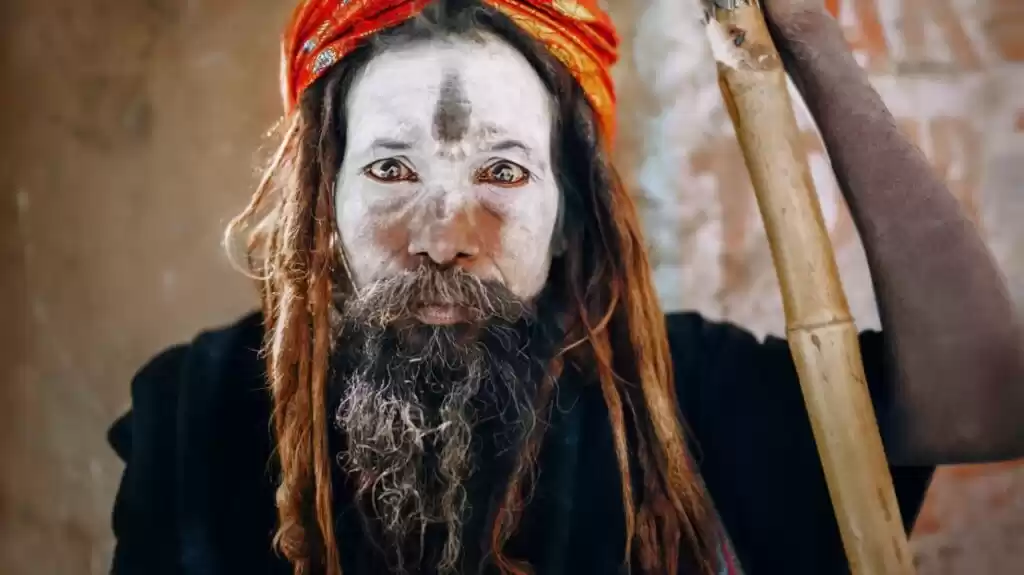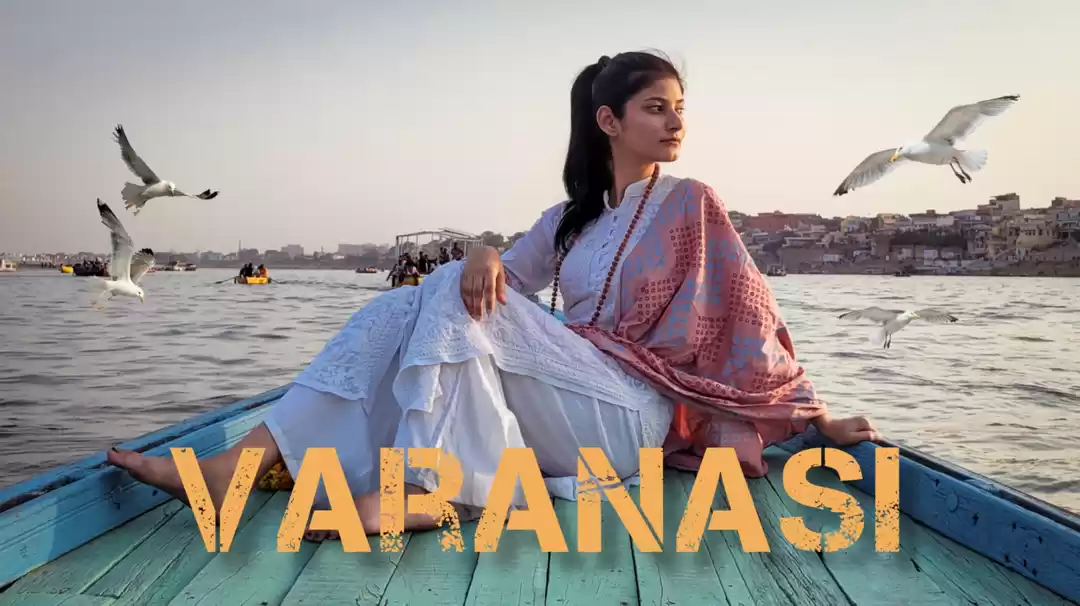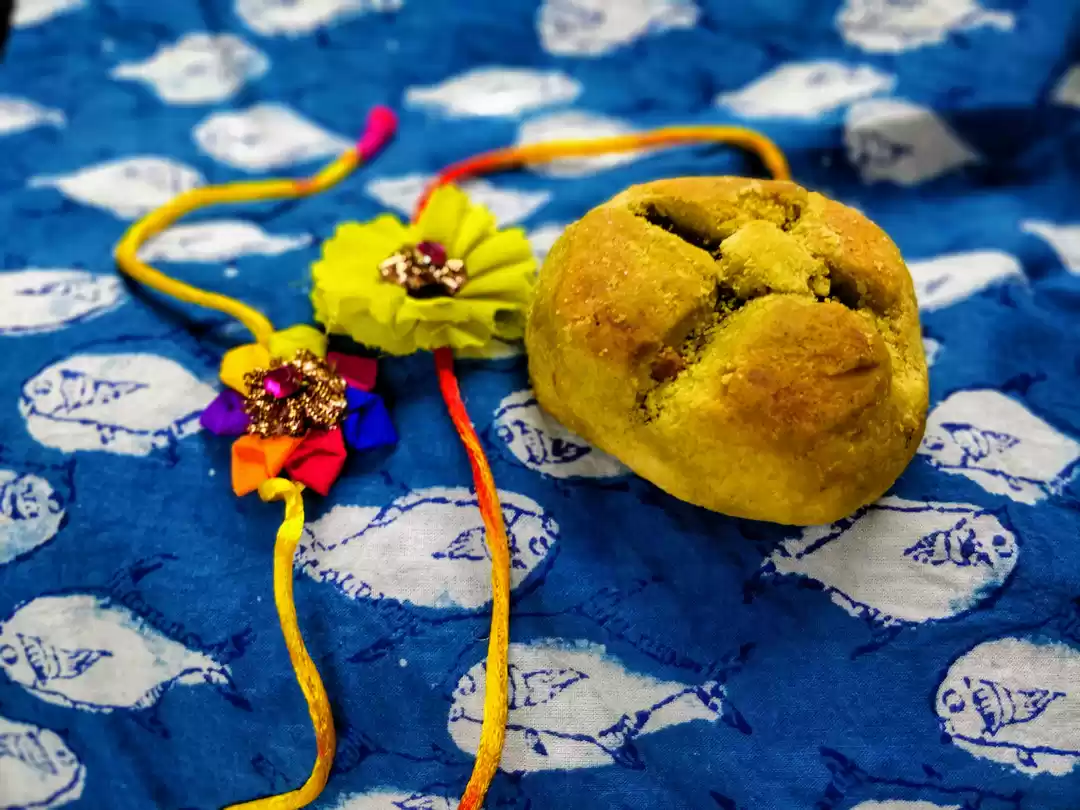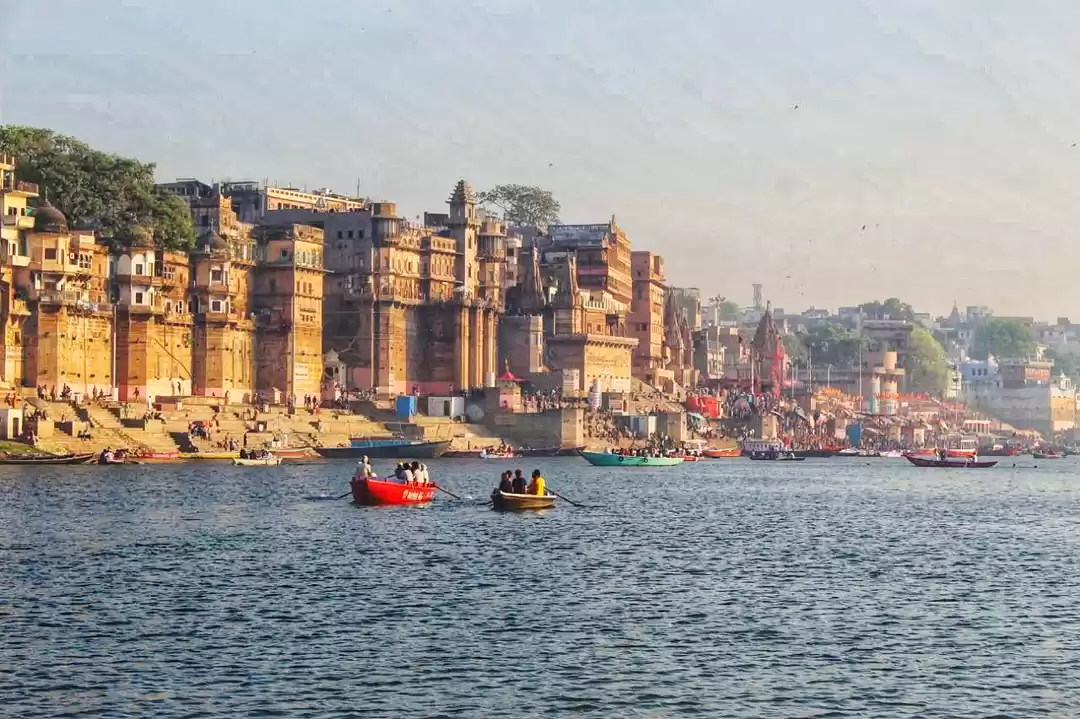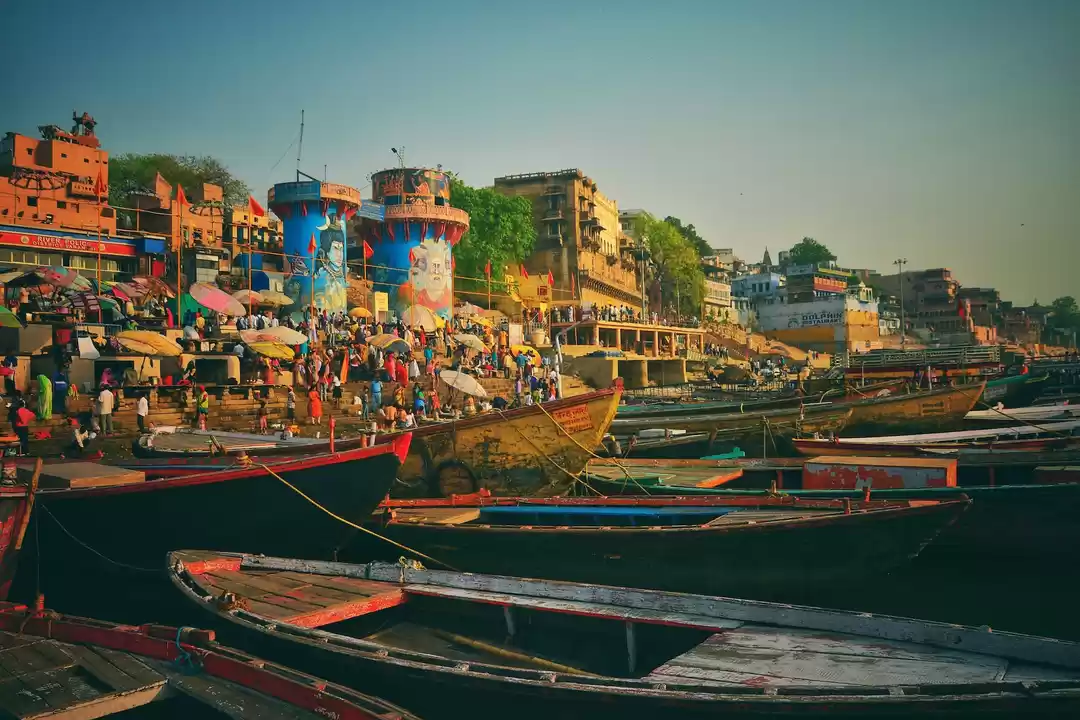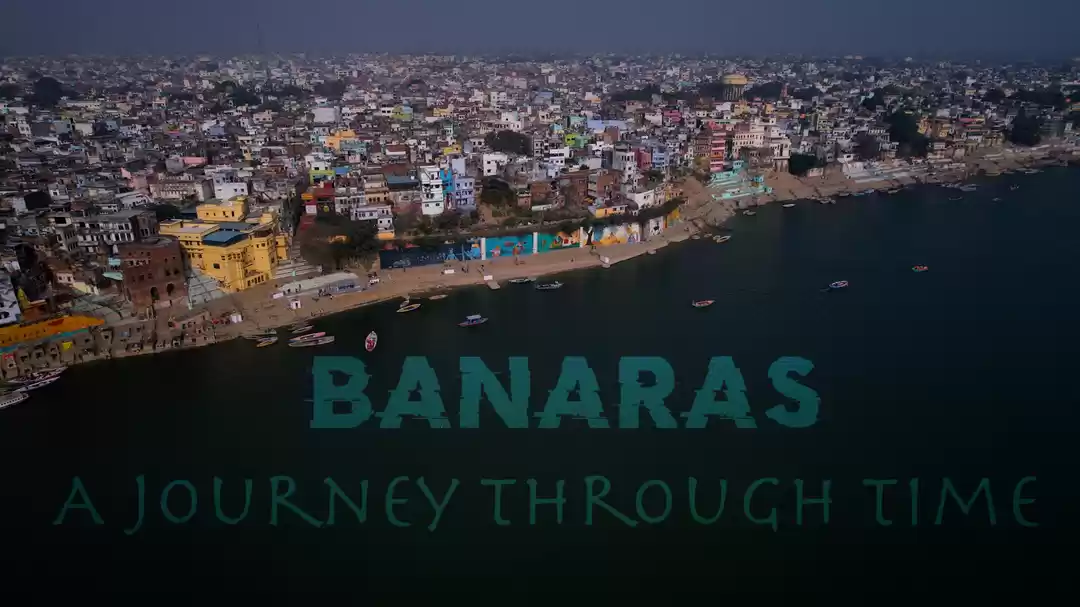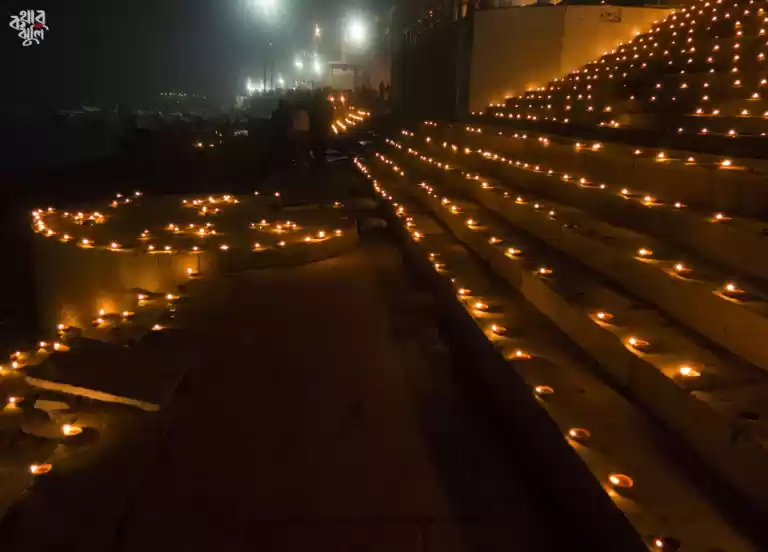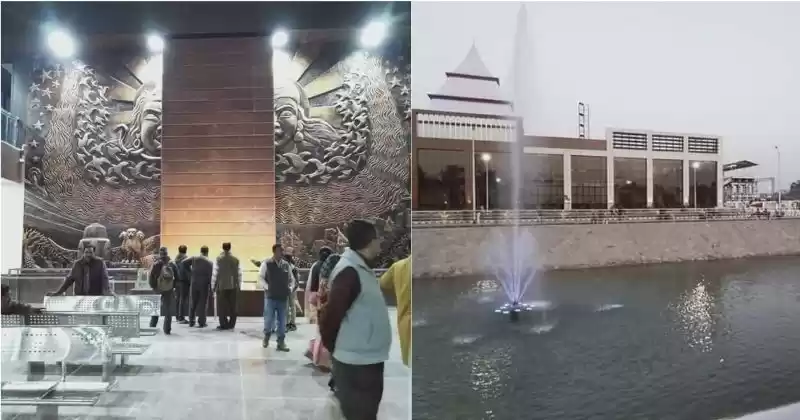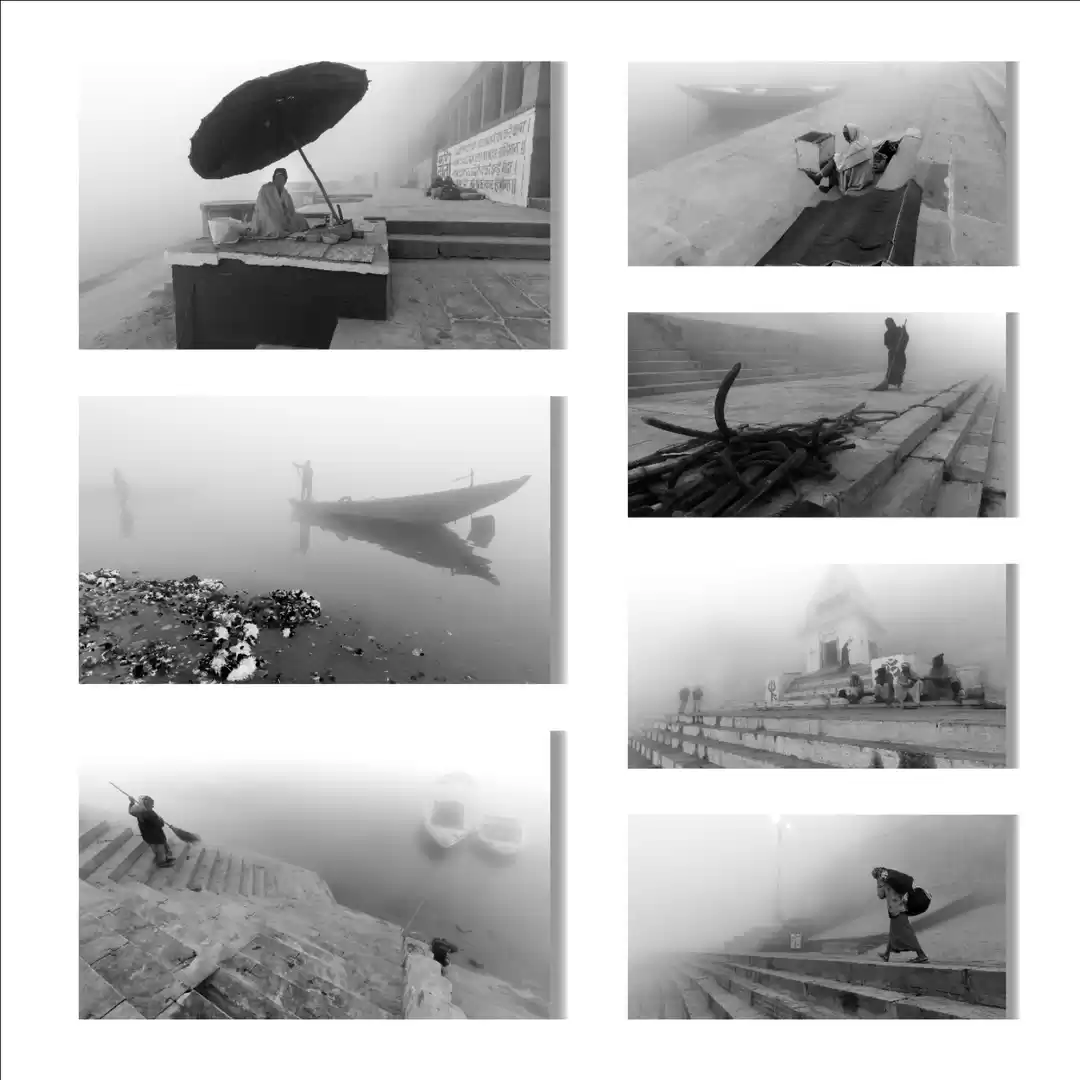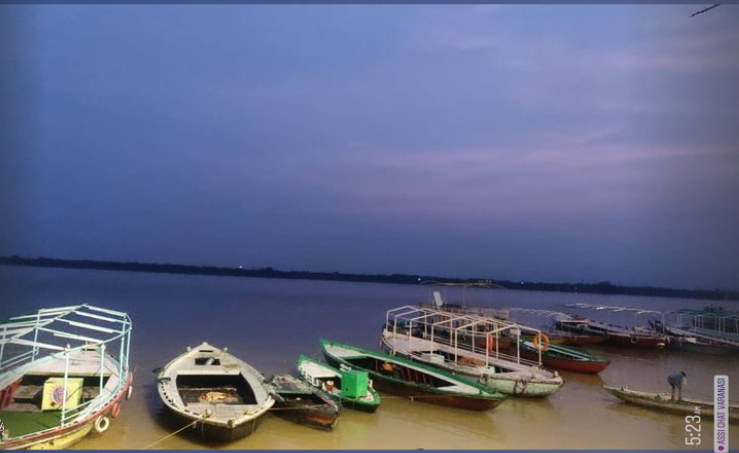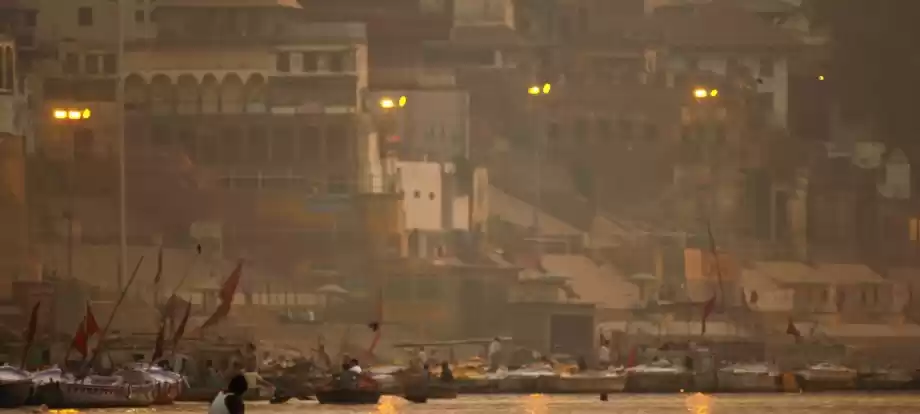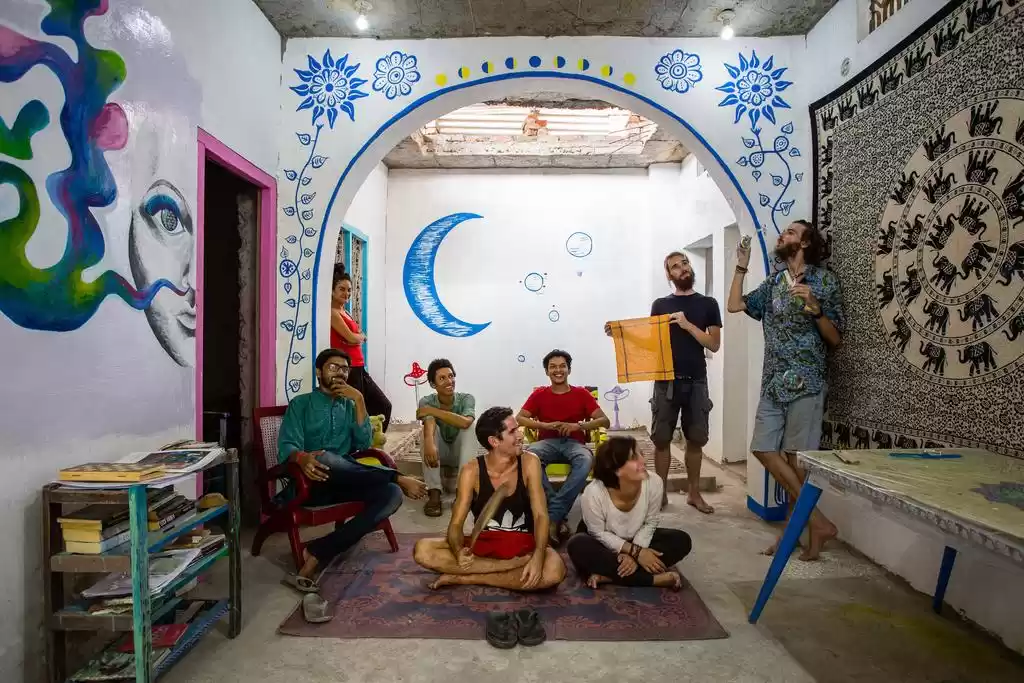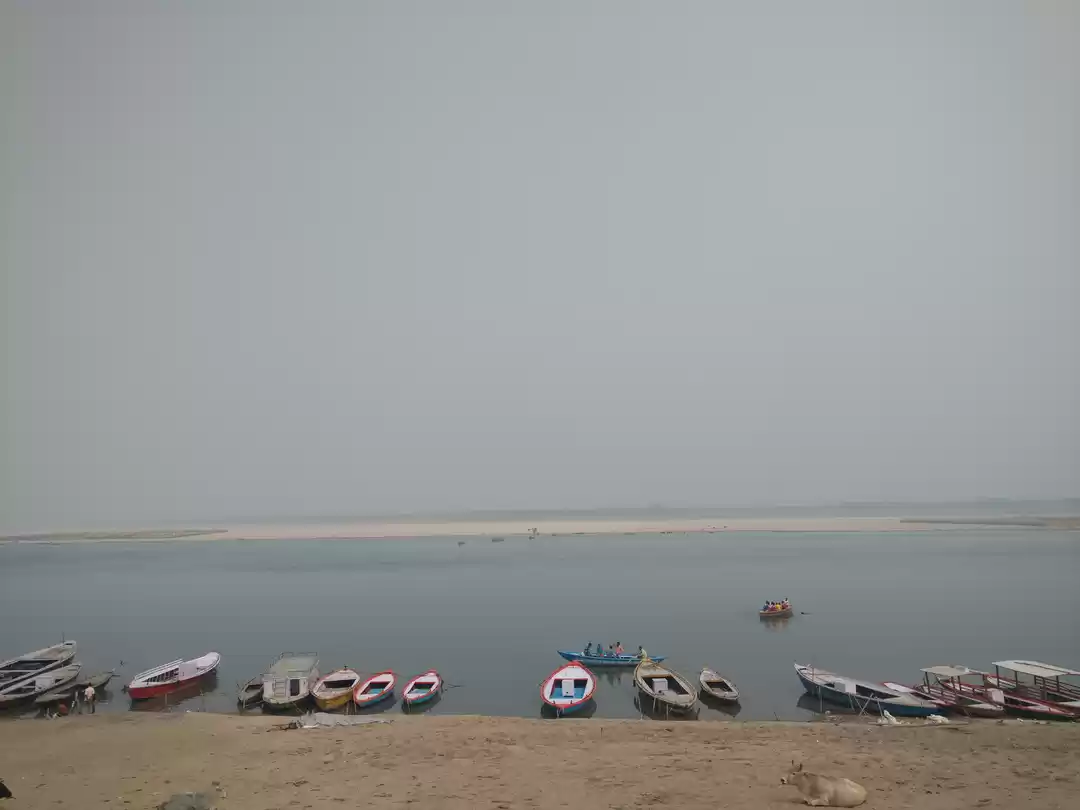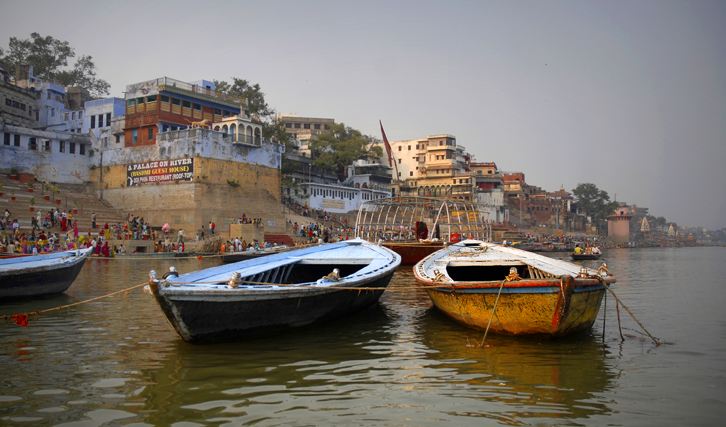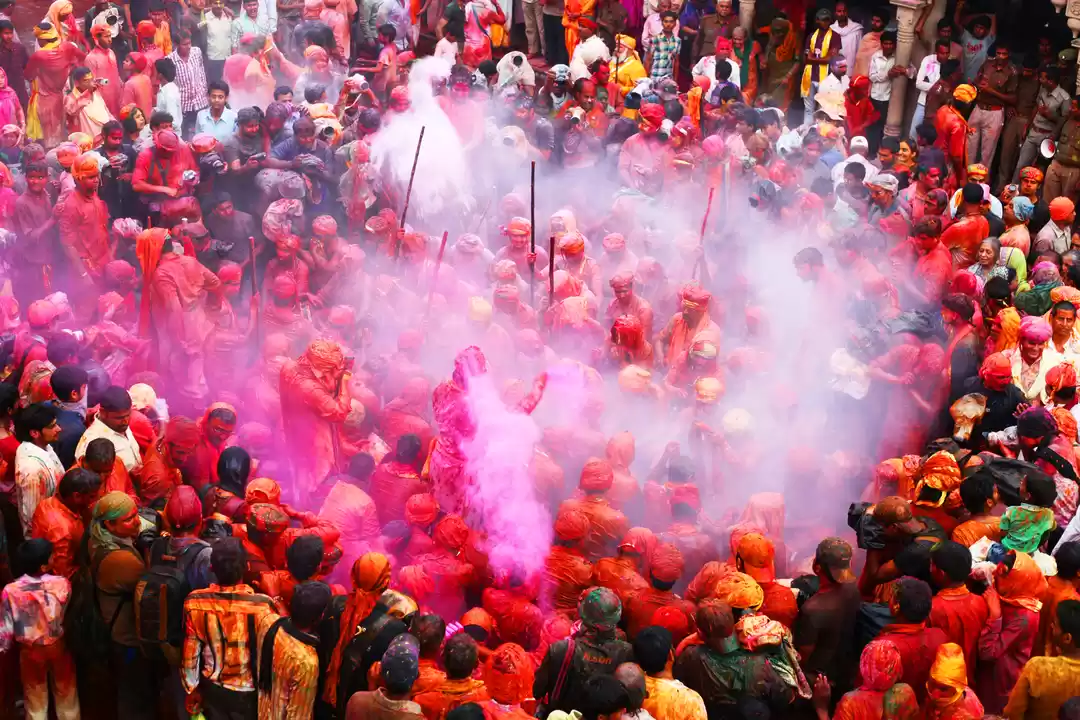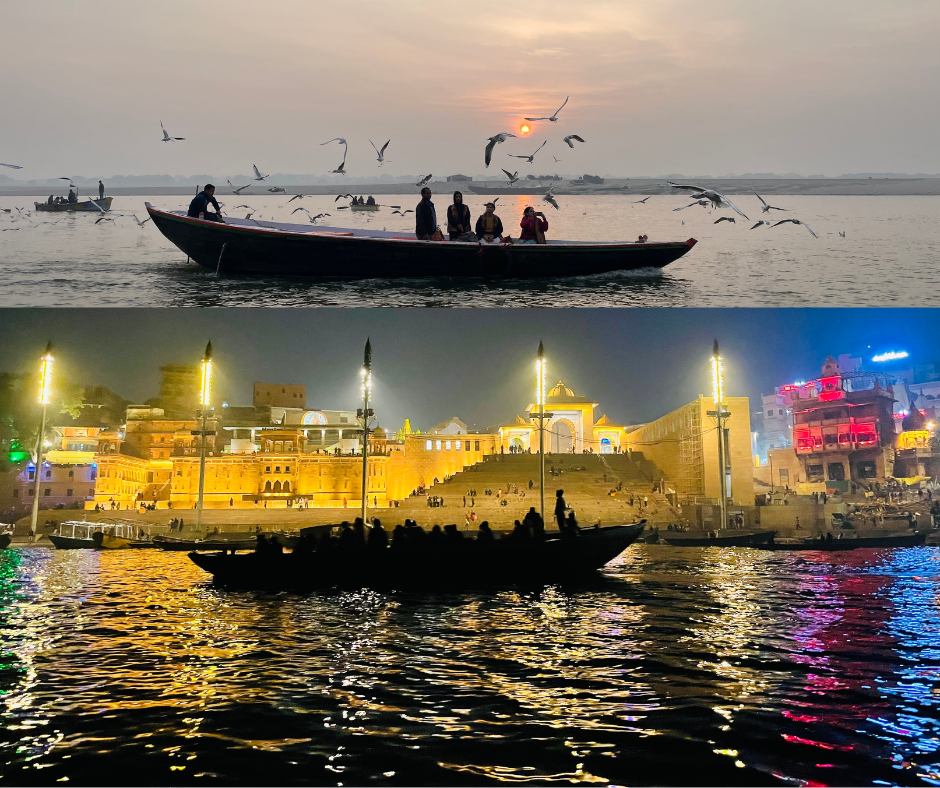Most Hindus lovingly refer to Varanasi as Kashi, or the 'City of Lights'. Its very first residents are said to have arrived in the city in 1000 BC. Brought to life by the Hindu deity Lord Shiva, Varanasi is believed to be 3000-years old. A plethora of ghats in Varanasi are proof of its rich heritage.
A cacophony of sights and sounds ushers you in, the second you step onto any of the ghats in Varanasi – congregations of pilgrims flooding the steep steps sidling up to the river, saffron-clad Hindu priests bustling about the temple squares, and uninitiated travellers bumbling around Chowk, the city's primary thoroughfare. The banks are almost always awash with stark bodies of the sadhus, caked in grey ash, distant mournful melodies adrift the burning ghats and mystical dwellings of astrologers and palm readers, punctuating the landscape. Making way for an indelible, immersive experience, ghats in Varanasi are a visual and aural delight.
List of ghats in Varanasi:
Assi ghat sits where the Ganges meets river Assi. Far away from the tourist hubbub, it sits on the southern end of ghats in Varanasi. Under the shade of a lone peepal tree lies a massive lingam structure, adjacent to which Lord Shiva's devotees can be seen every morning, taking a long dip into the waters before proceeding for their prayers. Swarmed majorly by foreign students, researchers and tourists, Assi is as expected, cloaked in Hindu mythology. It's believed that Goddess Durga, upon slaying the demon, Shumbha-Nishumbha, had thrown her sword at the very point where the Assi river begins.
Top things to see and do: Be sure to catch the spectacular morning aarti known as Subah-e-Banaras, that takes place at 4am; as the ghat faces the east, wake up early one morning to witness a magnificent sunrise; take part in one of the free yoga sessions conducted on the ghat every morning; gorge on platefuls of gol-gappe from the ramshackle shop right behind the Assi Choraha sign board; try the local breakfast of kachori-sabzi and jalebi; at Assi Choraha's Kashi Stall, get yourself a kulhad of chai; if you're craving for some pizzas, head to the charming Vaatika Cafe.
Where to stay: Ganga Monastery and Palace On Ganges. For more options, check here.
Probably the holiest of the lot, this ghat is believed to grant salvation or moksha to the mortal souls upon their cremation here. Flocked majorly by scores of elderly people, they visit and spend their last days on the ghat, with the faith that Manikarnika is a portal to another life as an aftermath to our actions in the past (karma). This ghat also stores hordes of Hindu genealogy registers. Referred to as the 'burning ghat', Hindus believe that being cremated here liberates them from the cycle of rebirth and death. Clusters of funeral pyres line the shore and fires can be seen burning away into the oblivion at all hours of the day. If you observe closely, you will see on loop, corpses enwrapped in cloth, lying on makeshift stretchers and being carried by the doms (locally believed to be untouchables). For a small fee, tourists can witness the entire cremation procedure under the supervision of a priest or a guide.
Top things to see and do: Head to the Kathwala Temple (Nepali Temple), that is a replica of the Pashupatinath Temple in Kathmandu; plan a visit to the magnificent Shiva temple of Kashi Vishwanath (locally known as the Golden Temple), which happens to be one of the 12 Jyotirlingas; go to the towering Alamgir Mosque that stands out amongst the endless blocks of nondescript temples, offering a spectacular view of the entire city; take back home a few florid banaras silk sarees from Bhole Silk Handicrafts.
Where to stay: Ganpati Guest House and BrijRama Palace. For more options, check here.
Essentially a fortified riverbank, Chet Singh ghat is steeped in history. The erstwhile battleground for Warren Hastings and Chet Singh's troops in 1781, the Indian king built a small fortress at the ghat to seek refuge. Regardless, he was defeated, and both the fort and the ghat were captured by the British. Formerly known as Khirki ghat, it's divided into four banks – Cheta Singh, Niranjani, Nirvani and Shivala. Dating back to the 18th century, the ghat is also decked with three Lord Shiva temples.
Top things to see and do: Get involved in the musical 300-year old Budhwa Mangal festival, that is celebrated on this ghat for an entire week; after the sun sets, head to the banks and soak in the soul-stirring aarti; while there isn't a lot to do around this ghat, walk around the alleys that are chock-full of ashrams and vintage residential colonies.
Where to stay: Stops Hostel Varanasi and Panchkote Raj Ganges. For more options, check here.
One of the lesser-known ghats in Varanasi, the bank was christened in the memory of the Muslim commander, Meer Rustam Ali. Home to the religious sites of Jarasandhesvara and Vrdhaditya, pilgrims can be seen every morning, throwing fistfuls of flowers and raw rice into the Ganges. At the site of Vrdhaditya, shrines of Asa Vinayaka and Yajna Varahaand Visalaksi can be found. A sacred well, encircled by five temples, and a structure representing the Divodasesvara lingam are located at the site of Dharmakupa. Interestingly, Swami Karapatri, a conservative Brahmin and cult-chief, believed that due to the presence of people from the lower castes, the ghat's Visvesvara temple was rendered 'impure'. And hence, in 1956, he established the 'New Visvesvara Temple', that today sits on the very top of the ghat.
Top things to see and do: Head to the Varanasi Cafe & Bakery, for a hearty breakfast; visit the ancient Batuk Bhairav Mandir; for a glimpse into Varanasi's Buddhist connection, visit the soaring Statue of Standing Buddha; visit the sandstone structure of the Ramnagar Fort, dating back to 1750, and marvel at its Mughal architecture.
Where to stay: Hotel Alka and A Palace on River. For more options, check here.
This prismatic ghat is a photographer's delight. Darbhanga, built by Nagpur's finance minister, Sridhara Narayana Munshi, is replete with the most exquisite architecture. Henceforth, it's also known as Munshi ghat. Featuring a plush palace belonging to a royal family of Bihar, it dates back to the 1900s. Built entirely from sandstone, the palace is guarded by sweeping porches and Greek pillars. The Darbhanga Palace was taken over by the Clarks Hotel Group in 1994, who renovated the palace and transformed it into the Brajrama Palace Hotel.
Top things to see and do: Take a walk along the ghat as you chase the setting sun; take a hike though the dense forestation of the Chandra Prabha Sanctuary; visit the weaver's village of Sarai Mohana that is known for its gold and silver brocade and immaculate zari work weaved onto the finest of silks; keep aside a few hours for the vibrant Thateri Bazaar, and pick up souvenirs; gorge on the Banarasi kalakand and paan from any of Godowilia bazaar's hole-in-the-wall shops.
Where to stay: Ram Bhawan Residency and Ganges Inn. For more options, check here.
Scindhia ghat is bursting with colour. According to local belief, Agni, the Hindu god of fire, was born at this very place. One of the first things you will notice about the ghat is its partially submerged, 150-year old Shiva Temple. The structure sank in 1830, when the ghat was under construction. More lively in its atmosphere than any of the other ghats in Varanasi, Scindhia is home to a complex of narrow maze-like alleys, that is known as Sidha Kshetra (field of fulfilment) and frequented mostly by pilgrims. Scindhia is neighboured by the Manikarnika ghat on the north, and right above the grounds of the ghat, lie most of Kashi's prominent shrines.
Top things to see and do: Take a boat ride across the placid waters of the Ganges, especially after sundown; at the crack of dawn, take a dip into the river, and douse yourself in a few long seconds of serenity; visit the 18th-century Durga Temple; if you have an afternoon to spare, book yourself a temple-circuit tour and hop from one temple to the next (keep an eye out for the shrines of Annapurna, Ankatha, Mritunjay Mahadev, Tulsi Manas and Sankatmochan).
Where to stay: Scindhia Guest House and Shivratri Guest House. For more options, check here.
One of Varanasi's oldest ghats, Dasaswamedh hosts some of the most mellifluous aartis come sundown. Crammed with a multitude of frenetic markets, the ghat is shrouded in myths and legends. One such legend recounted many a times by your local guide will tell you that 10 horses were sacrificed by Lord Brahma (the ghat's name was derived from this belief), during the Dasa-Ashwamedha yajna, upon which the ghat came into being. Priests majorly worship the God of Fire (Agni) here and devotees worship Lord Shiva, River Ganges and the Sun God.
Top things to see and do: Visit the observatory of Jantar Mantar, built by Maharaja Jai Singh; head to the Archaeological Museum, near the Chaukhandi Stupa; being one of the more popular bathing ghats, take that camera out to capture the rows of barely-clad pandas (the religious middlemen) lounging under bamboo umbrellas; take a massage by the ghat; go to the Bharat Kala Bhavan that showcases a vast collection of clay and bronze sculptures epitomising Varanasi's colourful history.
Where to stay: Bunkedup Hostel and Hotel Varuna. For more options, check here.
Man Mandir ghat is known primarily because of its opulent Rajput architecture, influences of which can be seen through the premises. In the mid-1600s, Maharajah Man Singh, hailing from Jaipur built a dazzling palace here. In the summer of 1730, Sawai Jai Singh II built an observatory here. And its astronomical instruments are still intact owing to the good maintenance around the ghat. The palace's vast terraces offer glorious views of both banks of the Ganges.
Top things to see and do: Visit the temples of Sthuladanta Vinayaka, Rameshwara and Someshwara; go to Aurangzeb's Gyanvapi Mosque; for a dose of Buddhist culture, head to the stupas of Dhammek and Chaukhandi; for a lesson in history, take a walk through the Pillars of Ashoka.
Where to stay: Madhuvan Palace and Hotel Grapevine. For more options, check here.

Explored the ghats in Varanasi recently? Share your travel journey on Tripoto and inspire millions to travel! Also, check out Tripoto's exhaustive guide to Varanasi!
Frequent Searches Leading To This Page:-
Varanasi ghat places to visit, top Varanasi tour package with price


